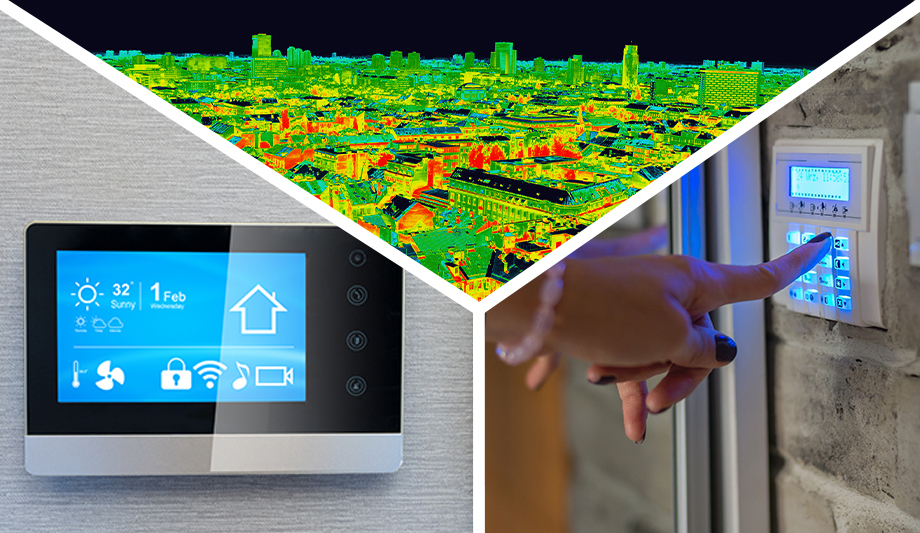Roundtable roundup: home automation, thermal cameras, alarms and more
Editor Introduction
Our Expert Panel is an opinionated group on a wide variety of topics, and we are dedicated to providing a useful and flexible forum to share those opinions. This week, our panelists address a range of opinions about several self-selected topics, culled from the large number of Expert Panelist responses we have collected in the last year. In this Expert Panel Roundtable article, we will share these varied and insightful responses to ensure they are not lost to posterity!
On changes impacting home automation and residential security
A ‘smart home’ is defined by author Frances K. Aldrich as as a residence equipped with computing and information technology that anticipates and responds to the needs of the occupants – working to promote their comfort, convenience, security and entertainment through the management of technology within the home and connections to the world beyond. New collaborations are being made between audio-video (AV) suppliers and security solution providers. The clientele of high-end AV products is becoming increasingly concerned with home security and property protection. So, in recent months, the requirement for residential security solutions has been increasing as technical solutions can go hand in hand with AV installers’ capabilities and client base. The concern is that personal and social consequences of smart home technology are largely being overlooked and raises the question of – where will it stop?
On the impact of low-light cameras
Low-light technology, like many others, is continuously advancing and improving. The market share is growing for low-light cameras, and as it does, there are more options on the market for end users, and a sense of competition among manufacturers. So yes, they are better than ever, but they will continue to advance because of the constant evolution in play. It will also grow the overall market, as low-light cameras will replace the need for lighting systems as a part of a security system altogether, making cameras possible to put in more places. For example, there will be no need for floodlights as it relates to capturing footage if low-light technology is present.
On lower-cost thermal imaging
The introduction of low-cost thermal imaging will greatly increase the number of installations that successfully monitor outdoor locations for intrusion. Thermal has always been regarded as the superior way to monitor outdoor environments because of its immunity to weather and lighting conditions. The problem with thermal has always been cost. Because thermal cost was several thousand dollars or more per sensor, standard video cameras with video analytics became the choice because they are much cheaper to install than fence-based intrusion detection systems, PIR detectors, or other solutions. The challenge has been the number of nuisance alarms. It is not uncommon for a central station to receive over 1,000 alarms a night from a single location that is using standard video with analytics to trigger alarms. We have replaced many of these solutions with low-cost thermal detectors and decreased false alarms from 1,000 a night to 1 or 2 a week.
On the outlook for mergers and acquisitions (M&A) in 2019
We expect the trend of consolidation to continue in 2019. Large companies are looking for ways to build their portfolios through the addition of innovative technology, as well as acquiring companies that add value to the overall brand. As I've said before, the access control sector of the security industry is highly fragmented, making it one area where M&A activity is poised to make a dent in the overall landscape. However, I know that as we see the economy start to cool off a bit, many companies will become more cautious about the opportunities they pursue, waiting for the ideal price, timeframe and company fit that will truly add additional value to their overall portfolio.
On the value of alarm verification
It’s rather naïve to assume alarm verification does anything but add value! The ability to assess whether an alarm is real or not adds an essential level of trust between the security operator and its systems. This level of trust doesn’t just stop at the organisation or individual using the alarm system. Police services often have an acceptable threshold of false alarms before they won’t respond, so verification is very important in maintaining this support. For larger operations with an alarm receiving center, it’s also important that security teams know they can rely upon these systems. If an alarm has a habit of ‘crying wolf’, it will either waste valuable time or, worse still, be ignored when a real alert is triggered! In many ways, an untrustworthy alarm can be more of a problem than no alarm at all, so verification ensures these investments fully deliver on their promise.
On security in one’s personal life
While at work, I feel totally secure. As I am in the technology industry, my home Wi-Fi is secured, and cameras and other IoT devices have passwords to ensure they aren’t compromised. One unsecure thing I might be doing is that sometimes I leave my car keys on the table, but I have a GPS tracker and an app that sends a message if the keys are 50m from me. Devices often overlooked in terms of security are doorbell cameras. Many users do not change their default passwords and risk being attacked by cyber-criminals. Changing passwords on routers and IoT devices is the digital equivalent of fitting an alarm to your house or additional locks. When sharing data via a USB key, it is important to use a drive that has a password and to ensure your anti-virus software – which should scan new USB devices – is always up to date.
Editor Summary
We appreciate this week’s Expert Panel Roundtable responses on a range of topics and will return next week to our usual format of ensuring the panelists are addressing a single topic. Our Expert Panel Roundtable forum depends on the participation of a wide range of industry professionals, and we are always looking to welcome new participants to the fold. Email larry.anderson@nottinghillmedia.com if you are interested.













